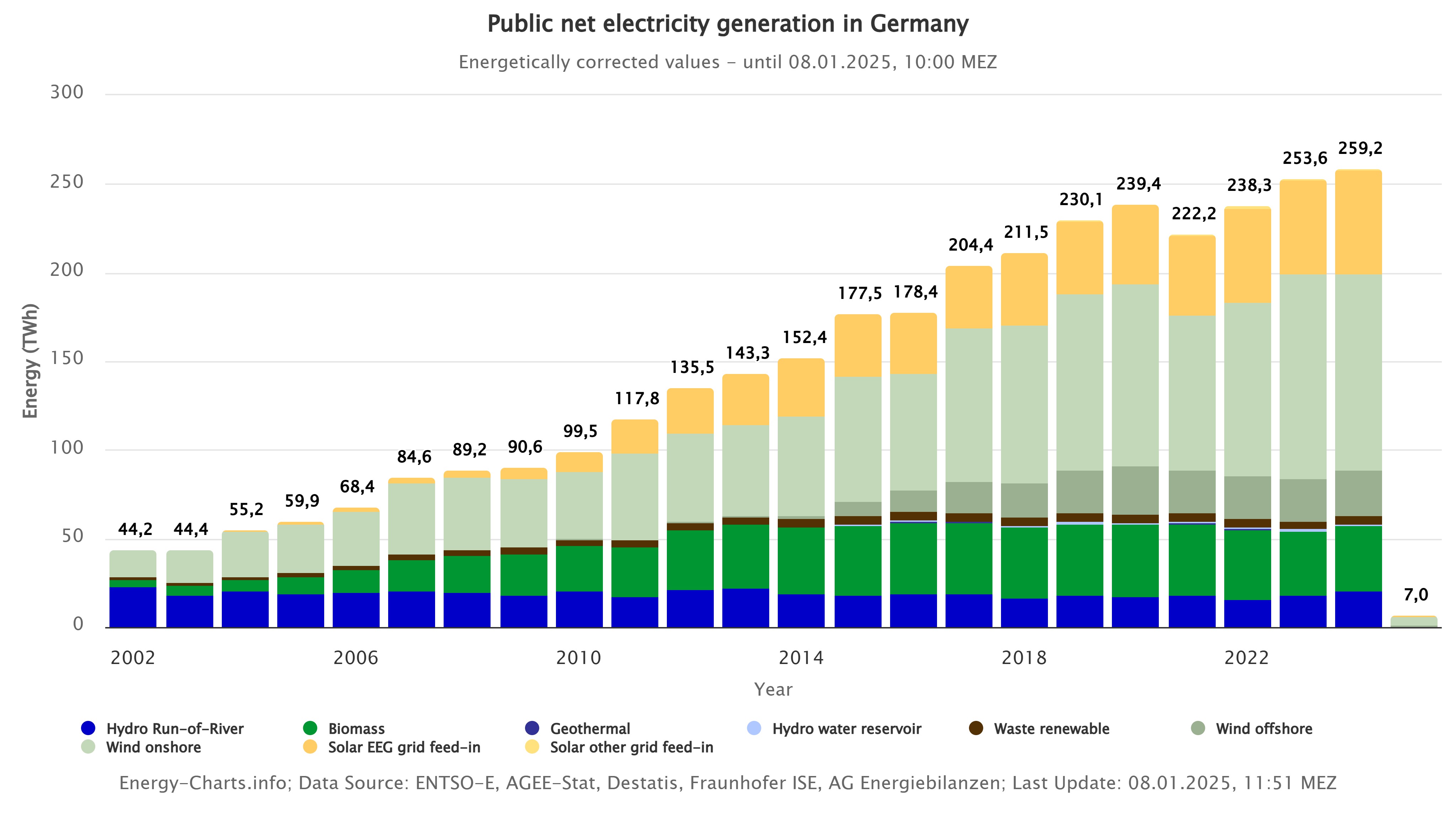Press Release #21
Net Public Electricity Generation in H1 2025: Solar Power on the Rise Across Europe
In the first half of 2025, Germany and many other European countries generated more solar power than ever before. This was offset by lower electricity generation from wind energy. As a result, the share of renewable electricity in Germany's net public electricity generation was 60.9 percent, down from 65.1 percent in the first half of 2024. Within the European Union, public electricity generation from solar and wind fell from 358.1 terawatt hours (TWh) in the first half of 2024 to 344.4 TWh in the first half of 2025. This is according to the half-yearly data on public net electricity generation presented today by the Fraunhofer Institute for Solar Energy Systems ISE. The evaluation is based on the data platform energy-charts.info.

Wind energy was once again by far the strongest source of electricity in Germany, with 60.3 terawatt hours (TWh) compared to 73.4 TWh in the first half of 2024. Its share of net public electricity generation was 31.6 percent. “That's around 6 percentage points less than in 2024, simply because there was less wind than last year,” comments Prof. Bruno Burger, senior scientist at Energy Charts at Fraunhofer ISE. “The increase in solar power generation was only able to partially compensate for this.”
Photovoltaic systems fed 40.0 TWh into the grid, an increase of 30 percent over the previous year (first half of 2024: 30.7 TWh). In many other European countries, too, public net electricity generation from photovoltaics continued to rise: in France, solar systems contributed 15.1 TWh of electricity (1st half of 2024: 11.3 TWh), Belgium generated 5.6 TWh (1st half of 2024: 4.1 TWh), Denmark reached 2.3 TWh (1st half of 2024: 2.0 TWh); and Poland increased its feed-in of solar power from 8.8 TWh in the first half of 2024 to 10.3 TWh in the first half of 2025.
Imports and exports
In the first half of 2025, a net total of 7.7 TWh of electricity was imported (first half of 2024: 9.2 TWh net imports). Electricity imports came from Scandinavia (Denmark, Sweden, and Norway), France, Switzerland, Belgium, and the Netherlands. Due to the favorable electricity prices of wind and hydroelectric power in Scandinavia, electricity imports were cheaper than electricity from German coal and gas-fired power plants. Electricity was exported to Austria, the Czech Republic, Luxembourg, and Poland.
Prices stable
Volume-weighted electricity exchange prices rose slightly again after a sharp decline in 2023 and 2024: From €100.54/MWh in the first half of 2023 (day-ahead auction, volume-weighted) to €67.94/MWh in the first half of 2024, they have now returned to an average price of €86.64/MWh in the first half of 2025. Monthly electricity exchange prices were high, especially in January and February, due to low wind power generation. In June 2025, however, it was as low as €56.46/MWh, the lowest level since May 2021.
Electricity prices for new customers in Germany fell back to the level of summer 2021, averaging 27 cents per kilowatt hour in June 205. The price of natural gas was higher in the first half of 2025 than in the first half of 2024. The cost of CO2 emission allowances rose by 11 percent compared to the first half of 2024.
Last modified: